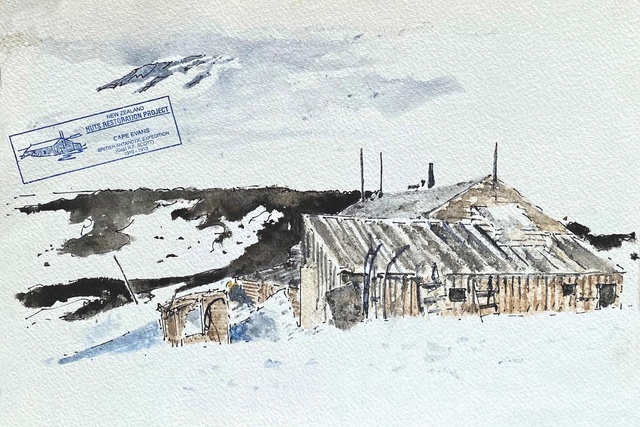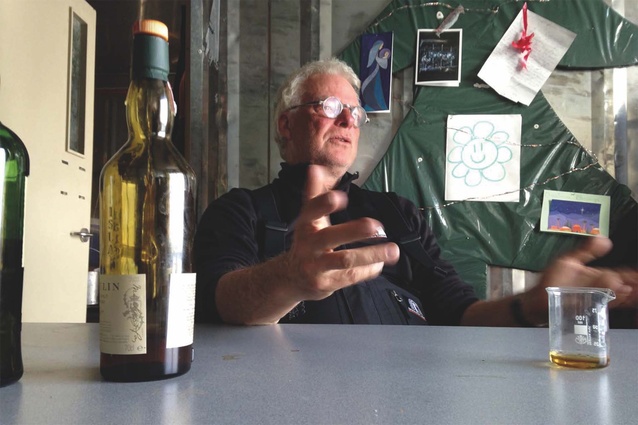Opinion: Off with my head!
Pip Cheshire recommends an industry-wide road map to survival and resilience.
It’s a challenging time for an old white bloke. Not that I am complaining; we have probably had too many good years stuffing up the planet’s ecosystem and marginalising Aotearoa’s first arrivals to begrudge the odd bit of disdain and a few epithets. I saw that the University of Auckland’s Professor Elizabeth Rata, writing in the New Zealand Listener a while back, quoted an unidentified tweeter calling for “white male boomer profs” to be the first to go in university staffing cuts. Though I have only briefly been identified as a professor, I am at once hurt, appalled and excited by this call to arms. Were I still to be on the professorial payroll, I would certainly be in the firing line and, no doubt, lament the loss of academic endeavour and the regular pay-cheques.
For all that, there is something that stirs in the breasts of many boomers when we hear a call to arms. Is it only me or does the thought of tumbrels filled with elderly white blokes heading out of the ivory towers evoke in others those chants of a turbulent past: “Amandla”, “hey, hey we don’t want your fascist war” and the eloquent, one-size-fits-all “up against the wall, motherfuckers”?
For all that the surge of blood the tweeter’s call evokes, it does put one of my vintage in a rather uncomfortable position as I reflect on a rapid transition from enfant terrible to being a major contributor to the world’s ills. What happened to a gentle autumnal phase of being an éminence grise? Has it been bypassed as planet and society race headlong into a murky future, assuming, of course, Rangi and Papatūānuku allow us one?
Designer Milton Glasser, he of the ‘I <3 NY’ fame, said “I am totally a believer in the idea that style is a limitation of perception and understanding”. This is a salient comment for a time in which we must rapidly recalibrate our way of living in what Buckminster Fuller called ‘spaceship earth’. The billionaire privateers taking joyrides through the ionosphere and sprinkling thousands of satellites into the ether to better transmit photos of cats and what we ate for dinner have done no favours and only affirm Glasser’s sentiment. If occluding the night sky was not proof enough, the trivialisation of human endeavour is no better illustrated than by the intergalactic journey of Elon Musk’s red Tesla, a prelude, he says, to the “spreading of humanity to other planets”. I think he meant ‘humans’, with our attendant piles of junk and trivia.
And what of we architects chewing up resources and fouling the air? Well, I think with the exception of a few brave and far-sighted souls, we have rather belatedly realised that we have some special responsibility for the miseries assailing the earth. For a while, in the 1970s, the so-called ‘counter-culture’ held the possibility of a society having greater regard to the physical and psychic well-being of individual and planet. Though the momentum of a new way of living, hinted at in publications like the Whole Earth Catalog and The Dome Builder’s Handbook: No. 1, was lost amid drugs, war and resurgent capitalism, there are some in our flock who have continued to ring the doomsday bell. Alas, the mainstream profession has more consistently been seduced by matters of style rather than acknowledged the vital concerns of the earth, our silent client.
Without delay, we must acknowledge that the requirements of a sustainable, healthy and resilient ecosystem are as fundamental to our designs as are the pragmatic expectations of a brief, the requirements of resisting Rūaumoko’s restlessness or winning a gong in the plethora of awards.
This should be a fairly simple business; a small population, good education and a generally free press should allow us to address issues rapidly to effect significant change. We are, too, blessedly free, so far, of the paralysing impacts of a sharply divided electorate, a federal system riddled with chicanery and the lurking presence of a failed demagogue. Despite this, we struggle for traction in addressing big issues and are sometimes caught, I suspect, between a too-short election cycle, a too-small gene pool and an undue regard for central government’s ability to deliver the goods.
I suspect the latter has its genesis in the mythology of a few historical acts of social manipulation, like the state house, voting rights, the welfare state and so on. These have given rise to a potent legacy of faith in the power of central government and an assumption of its authority to sort things out, be they flattened cities, pandemics and even rising sea levels.
Our own organisation, Te Kāhui Whaihanga, suffers much the same burden. On the one hand, it is seen as having come into being by some sort of divine intervention rather than the concerted effort and commitment of member volunteers and the hard work of the organisation’s hired hands. Members’ expectations of it, though, are unbounded and it does seem as though the diffusion of energy brought about by meeting the unrestrained demands of its members has weakened the organisation’s ability to effect change in more critical matters in which we are key players: our complicity in the despoliation of the planet, for example.

I am grateful for the Institute’s constant supply of advice on keeping the zoomed-out studio going and navigating a construction industry thrown on its head by site and factory shutdowns, labour shortages and choked supply lines. Those of us not yet affected by floods, fires and the other manifestations of global warming value, too, advice on navigating MBIE et al.’s endless machinations as they spew out regulations and legislation like a malevolent volcano. For all the outstanding work the Institute does, we desperately need focused and insistent guidance on addressing our role in the complex mix of science and politics that drives the response to climate change and the collapse of biodiversity.
I again urge Te Kāhui Whaihanga to focus its, our, resources on that most pressing of issues: our professional role in and response to the parlous state of spaceship earth. If that means a reduction in other areas to balance the books, so be it. The organisation has made a good start in organising and promoting talks and webinars on the mysteries of embedded and active carbon, and sifting through the many competing energy and carbon-measuring schema but now is the time to ‘go hard and go fast’. Our team of five thousand is committed to action but, such is the complexity of issues at hand, that collective action and the aggregation of wisdom, which is surely the Institute’s raison d’être, is vital.
Let us take as our model those who have suggested it is time for the guillotine to be brought out to remove the universities’ aging, white departmental heads. Let every communication to members be insistent and demanding, framed in an action plan: a road map to survival and resilience. It is time, too, to speak clearly and publicly on behalf of members. We have an ethical responsibility to act in the best interests of our fellow citizens, be that care of their brief and budget or the best interests of their children’s children. If you feel this is departing too far from Te Kāhui Whaihanga’s core business, I am certain that demonstrating the profession’s commitment to putting our house in order would be good marketing for a profession too often seen as involved in little more than the manipulation of luxury.










